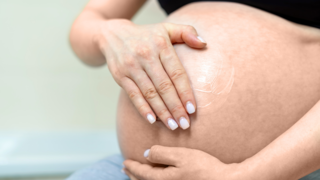In this article:
While the term might sound worrying, early detection and careful management help most women deliver healthy babies.
Types of High Blood Pressure in Pregnancy
Understanding the type of hypertension helps doctors decide the proper treatment and monitoring plan.
- Gestational Hypertension: Develops after 20 weeks of pregnancy and typically resolves after delivery. If not controlled, it may lead to pre-eclampsia.
- Chronic Hypertension: High blood pressure that was present before pregnancy or diagnosed before 20 weeks. Some women may not realise they have it until pregnancy check-ups begin.
- Pre-eclampsia: A serious complication of pregnancy-induced hypertension that involves high blood pressure and damage to other organs, commonly the liver and kidneys. It can restrict the baby’s growth and endanger both mother and baby if untreated.
- Eclampsia: The most severe form is characterised by high blood pressure that causes seizures or convulsions. It is a medical emergency requiring hospital care.
Causes and Risk Factors
The exact cause of pregnancy-induced hypertension isn’t fully understood, but several factors increase the likelihood of developing it. Common risk factors include:
- First-time pregnancy
- Family history of pre-eclampsia or hypertension
- Being under 20 or over 35 years of age
- Carrying twins or multiples
- Obesity or being overweight before pregnancy
- Pre-existing conditions such as diabetes or kidney disease
- A history of autoimmune disorders (e.g. lupus)Genetics, immune response, and placental development also play a role.
How Pregnancy-Induced Hypertension Affects the Mother
While some women experience no symptoms, others may notice signs such as headaches, visual disturbances, or swelling. Untreated PIH can lead to:
- Damage to vital organs (kidneys, liver, brain)
- Preterm labour
- Placental abruption (when the placenta detaches from the uterine wall too early)
- Eclampsia and seizures
- Postpartum hypertension (which may persist after birth)
How It Affects the Baby
High blood pressure during pregnancy can affect the placenta — the baby’s primary source of oxygen and nutrients. If blood flow is reduced, the baby may not grow properly. Possible effects on the baby include:
- Foetal growth restriction (FGR): The baby grows more slowly than expected.
- Low birth weight: Due to reduced nutrient supply.
- Preterm birth: Doctors may induce early delivery if the mother’s health is at risk.
- Stillbirth: Rare but possible if severe hypertension goes untreated.
Monitoring the baby’s growth through ultrasound and non-stress tests helps ensure timely intervention and optimal care.
Symptoms to Watch Out For
Pregnancy-induced hypertension often develops silently, which is why regular antenatal check-ups are crucial. Seek medical attention if you experience:
- Persistent headaches
- Blurred vision or flashing lights
- Pain in the upper abdomen
- Swelling in the hands, face, or feet
- Nausea or vomiting in later pregnancy
- Sudden weight gain
- Shortness of breath
Never ignore these symptoms, even if they seem mild.
Diagnosis and Tests
Your healthcare provider may perform the following tests:- Blood pressure checks: A consistent reading above 140/90 mmHg indicates hypertension.
- Urine tests: To detect protein, a sign of pre-eclampsia.
- Blood tests: To monitor kidney and liver function.
- Ultrasound: To assess the baby’s growth and placental blood flow.
- Foetal heart monitoring: To ensure the baby’s heartbeat remains stable.
Regular screening is the most effective way to catch problems early.
Treatment and Management
The goal is to keep blood pressure within a safe range and ensure both mother and baby remain healthy.1. Lifestyle Management
- Rest frequently and avoid physical strain.
- Reduce salt intake.
- Stay hydrated but avoid excessive caffeine.
- Eat balanced meals with plenty of fruits, vegetables, and protein.
- Avoid smoking or alcohol.
2. Medication
Doctors may prescribe pregnancy-safe antihypertensive medicines such as labetalol or methyldopa. Never self-medicate or stop taking prescribed medication suddenly.
3. Monitoring
You may need more frequent antenatal visits, blood tests, and ultrasounds to monitor both blood pressure and the baby’s growth.
4. Delivery Planning
In severe cases, doctors may induce labour or perform a caesarean section if the baby’s or the mother’s health is at risk.
Preventing Pregnancy-Induced Hypertension
While it can’t always be prevented, some lifestyle measures reduce risk:- Maintain a healthy weight before and during pregnancy.
- Attend all antenatal appointments.
- Manage chronic conditions such as diabetes or kidney problems.
- Get enough rest and manage stress effectively.
- Eat iron- and calcium-rich foods.
- Stay physically active with safe exercises, such as walking or prenatal yoga.
Postpartum Recovery and Future Risk
Most women see their blood pressure return to normal after birth. However, some may continue to experience high readings for weeks or months. Postnatal check-ups are vital. Women who’ve had PIH are at higher risk of developing hypertension or heart disease later in life.Adopting a heart-healthy lifestyle early, including a balanced diet, regular physical activity, and blood pressure monitoring, helps protect long-term well-being.
Emotional Wellbeing
Pregnancy complications can trigger anxiety or guilt. It’s important to remember that hypertension is not your fault. Talking openly with healthcare professionals, joining support groups, or practising relaxation techniques like deep breathing can help manage emotional stress. A calm mind supports better physical health for both mother and baby.Pregnancy-induced hypertension can sound intimidating, but understanding it is the first step to overcoming it with confidence. While high blood pressure during pregnancy demands attention, it does not define your pregnancy or its outcome. With early diagnosis, regular monitoring, and the proper medical support, most women with PIH go on to deliver healthy babies and recover completely.
For the baby, timely monitoring ensures that growth and oxygen supply remain steady. And for the mother, following treatment and maintaining calmness protects long-term heart health. Pregnancy-induced hypertension doesn’t have to take away the joy of motherhood; it’s simply a reminder to listen to your body closely and prioritise your wellbeing.
Remember, pregnancy is a journey of partnership between you and your care team. By staying informed, proactive, and positive, you can navigate hypertension safely and give your baby the healthiest possible start. Knowledge, early action, and emotional calm are your strongest allies, turning a high-risk condition into a well-managed, hopeful experience.
Whether you’re pregnant, a new mom, or navigating postpartum, you don’t have to do it alone. Join our support group to connect, share, and support one another.
FAQs on Pregnancy-Induced Hypertension: Its Impact on Maternal and Foetal Health
- What is the difference between gestational hypertension and pre-eclampsia?
Gestational hypertension is high blood pressure after 20 weeks without organ involvement. Pre-eclampsia includes additional symptoms such as protein in the urine or organ damage. - Can pregnancy-induced hypertension harm the baby?
Yes, if untreated, it can reduce blood flow to the placenta and affect growth. Early management prevents complications. - Can I have a standard delivery with high blood pressure?
In many cases, yes. As long as blood pressure is controlled, vaginal delivery is possible under medical supervision.






